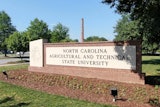
The report addressed four questions:
- How do small and mid-sized independent colleges and universities compare with other types of institutions in terms of students’ persistence to an undergraduate STEM degree after entrance into a STEM field of study?
- How do bachelor’s degree recipients from small and mid-sized independent colleges and universities compare with graduates from other types of institutions in their time-to-degree in the STEM fields? Upon receipt of a bachelor’s degree in a STEM field, what are the plans of graduates of small and mid-sized institutions for future studies? How do small and mid-sized independent colleges and universities fare in preparing undergraduates who later earn doctoral degrees in STEM fields?
In all cases, the findings reinforced the importance of small independent schools in the preparation, persistence and retention, and graduation of students in STEM fields. For example, rates of persistence and completion to a STEM degree were substantially higher in private non-doctoral colleges (62 percent) compared to public non-doctoral institutions (41 percent) and compared favorably with both private (63 percent) and public (82 percent) doctoral institutions.
With time-to-degree, 80 percent of students obtained their STEM degree in four years or fewer at the private non-doctoral institutions, compared to 34 percent at public non-doctoral. In addition, 57 percent of students obtaining bachelor’s degrees in STEM fields from a private non-doctoral institution planned on applying to graduate school, compared to 41 percent for students at public non-doctoral institutions.
In Massachusetts, the only state that educates more students (54 percent) at private independent colleges than public colleges, the data are even stronger and indicate that more than 70 percent of students entering STEM fields graduate with bachelor’s degrees from private nonprofit colleges.
Finally, when comparing the number of students who earned doctorates based on type of undergraduate institution, 20 percent of doctoral recipients from 2006 to 2010 earned their bachelor’s degree at a private non-doctoral school, compared to 12 percent from public non-doctoral.
The report concludes that “the role that independent, smaller colleges and universities play in preparing the nation’s scientists has often been overlooked,” and the hope is that this report will help in dispelling the myth that students interested in STEM should consider public, research-oriented institutions first, and also, that liberal arts colleges and the preparation of students interested in STEM careers are somehow mutually exclusive.
In a 2012 essay on the myths surrounding a liberal arts education, Carol T. Christ, then president of Smith College, discussed this “erroneous construct”:
- Rick Scott, the governor of Florida, said that, in place of liberal arts, “I want to spend our dollars giving people science, technology, engineering, math degrees … So when they get out of school, they can get a job.” According to a study from Nobel laureate Thomas R. Cech, [then] president of Howard Hughes Medical Institute [HHMI], … even though only 3 percent of college graduates received their education at liberal arts colleges, roughly 20 percent of scientists elected into the National Academy of Sciences in a recent two-year span come from liberal arts institutions.
- This should not come as a surprise. The humanities are important to the sciences not because they produce more cultured people, but because they produce better scientists. Cech argues that “just as mathematics is considered to be a good exercise for the brain even for those who will never use calculus in the future, so the study of great books, history, languages, music, and many other non-science fields is likely to hone a scientist’s ability to perceive and interpret the natural world.” A liberal arts education often presents students with contradictory opinions from different viewpoints, forcing an in-depth examination and critical distillation of data; I can think of no skill more important for scientists and engineers.
The CIC report is another important piece of evidence for “making the case” for the value of a liberal arts education, even for individuals interested in STEM careers. And perhaps, especially for those interested in STEM careers, the small private college or university could be a wise choice. As stated on the HHMI website, “Liberal arts colleges and master’s colleges and universities play a unique role in educating the scientific leaders of the future. [In addition,] these institutions serve substantial numbers of women and minorities underrepresented in the sciences.” And the special strengths of these small colleges and universities make them excellent environments for incubating future scientists.
Dr. Walter Breau is vice president of academic affairs at Elms College.















